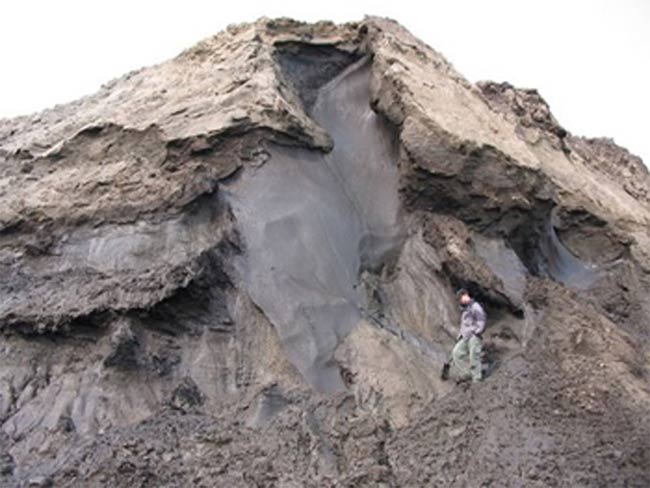Oldest Living Thing Found in Ice

The oldest living thing has been discovered in the form of 600,000-year-old bacteria extracted from ice cores, scientists claim.
The finding gives hope that if Mars or other frigid worlds ever supported life similar to these ancient bacteria, they might be alive still.
The trick, the discovery suggests, is for organisms to keep some metabolism going over the millennia, so that they can keep their DNA in repair while awaiting a more favorable environment in which to multiply. The other approach, complete dormancy, would cause DNA to be damaged and perhaps destroyed over such long periods of time.
The scientists isolated long chains of active DNA from the bacteria.
"The colder you make the environment, the longer [DNA] survives," said study team member Thomas Gilbert of the University of Copenhagen. "In places like Mars and [Jupiter's moon] Europa, which are really, really cold, DNA may very well be surviving there for a hell of a long time."
Ancient cells
Recently in separate work, scientists collected the oldest ever recovered DNA, estimated to be up to 800,000 years old, below more than a mile of Greenland ice. However, the DNA was not active inside a living organism.
Get the world’s most fascinating discoveries delivered straight to your inbox.
The new discovery involves extremely persistent life.
The secret to the longevity of the bacteria and DNA, the scientists write in the current issue of the Proceedings of the National Academy of Sciences, is the capacity of the DNA to continuously repair itself as it degrades over time.
Sarah Stewart Johnson of MIT and her colleagues uncovered the bacteria from cores drilled in northeastern Siberia, northwestern Canada and Antarctica. They isolated genetic material from the samples, finding the DNA was relatively intact.
"Normally with old samples of this kind of age, if you get any DNA at all, which is unlikely, you'll be getting maybe 30, 40, 50, maybe 100 nucleotide sequences," Gilbert told LiveScience. "Here they were getting 4,000 base pairs, no problem, which suggests the DNA is pretty good."
(DNA—deoxyribonucleic acid—is a ladder-like molecule made of paired bases and chemicals called nucleotides. Bacteria typically have about 1 million to 5 million base pairs per genome.)
They also measured carbon dioxide levels respiring from the bacteria, finding that the microbes were metabolically active. "Some of the bacteria are actually alive," Gilbert said.
Lab experiments indicated the bacteria could repair damaged DNA.
Bacteria mechanics
Recent research has found evidence suggesting that ancient bacterial cells and their DNA could survive for millennia in near-dormant states. Yet while dormancy would reduce the rate of natural DNA damage, truly dormant cells would not be capable of DNA repair. Over time, spontaneous chemical reactions would damage the cell's genome to the point where the cell would be unable to reproduce, proving fatal over the long-term.
The only way for cells to survive for up to millions of years would be if they had the ability to repair DNA, according to the study scientists.
Though past studies have claimed DNA older than half a million years, the scientists involved in the current finding point out their methods utilized stringent controls to prevent contamination from modern bacteria—a concern with past claims.
"People have reported old DNA several times but there have always been problems," Gilbert said. "It's very easy to get bacteria contaminating your work, because obviously it's everywhere."
- The Greatest Mysteries: How Did Life Arise on Earth?
- Wild Things: The Most Extreme Creatures
- Image Gallery: Microscopic Images as Art
Jeanna Bryner is managing editor of Scientific American. Previously she was editor in chief of Live Science and, prior to that, an editor at Scholastic's Science World magazine. Bryner has an English degree from Salisbury University, a master's degree in biogeochemistry and environmental sciences from the University of Maryland and a graduate science journalism degree from New York University. She has worked as a biologist in Florida, where she monitored wetlands and did field surveys for endangered species, including the gorgeous Florida Scrub Jay. She also received an ocean sciences journalism fellowship from the Woods Hole Oceanographic Institution. She is a firm believer that science is for everyone and that just about everything can be viewed through the lens of science.


